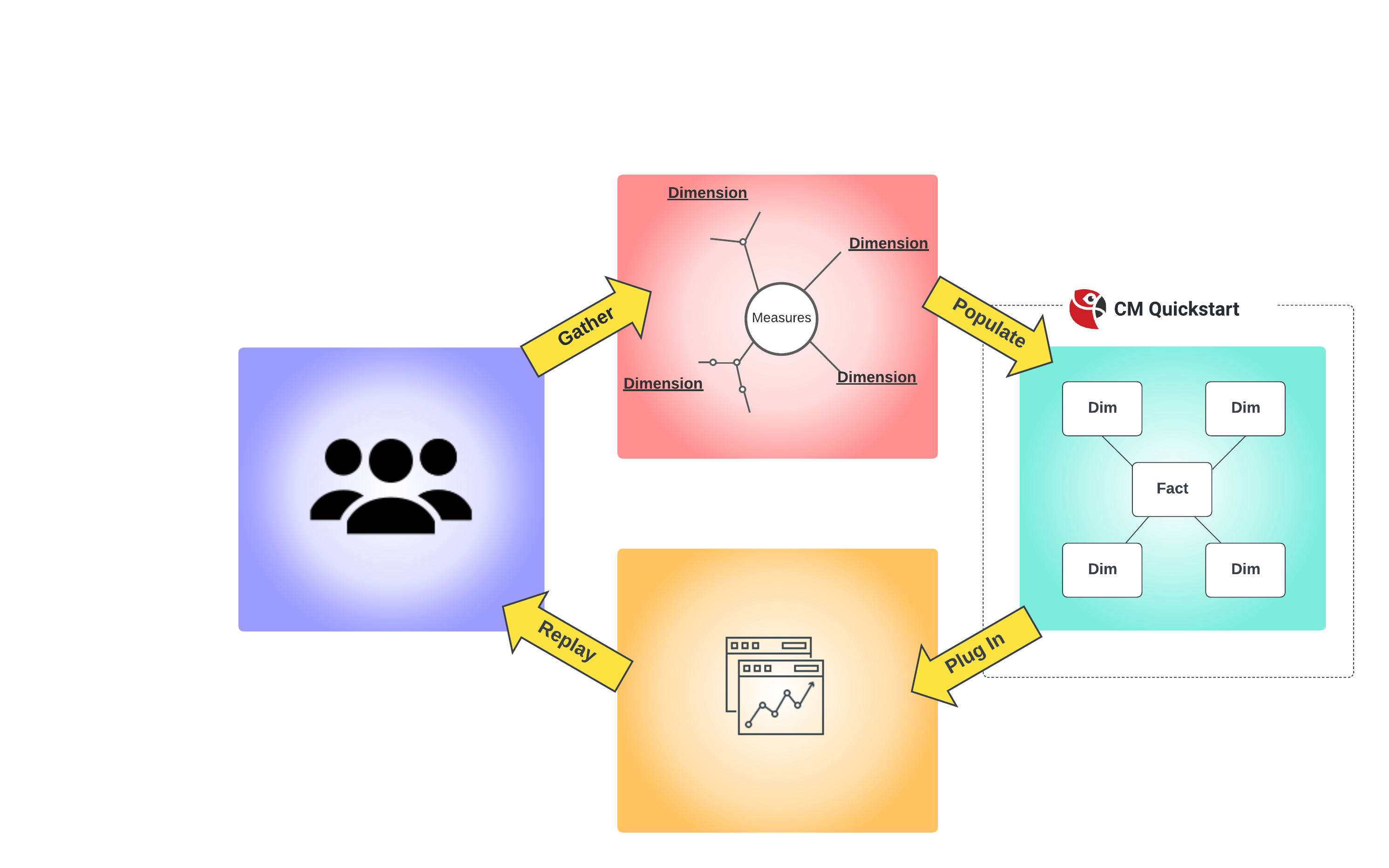By Kris Corrin (Principal BI Engineer)
At synvert TCM (formerly Crimson Macaw) we pride ourselves on delivering value for our clients as quickly as possible. The aim of this blog is to share with you how we have perfected the art of prototyping, by using our in-house developed prototyping tool; CM Quickstart.
Hopefully, by now you will have already read our blog about Sun Modelling. There we explain how we define, gather and map analytical requirements, ready to be developed as data models.
At this stage of the process, your stakeholders are as engaged as they will ever be. It is crucial to move quickly and get their hands on a physical output. Ultimately, this could be through a BI tool visualisation or direct queries against the data warehouse.
If there is a significant amount of time between capturing analytical requirements and having something tangible to demonstrate to stakeholders, we often run into the following issues:
- Engagement/interest from stakeholders drops off (they have a day job, too!)
- Requirements move on and need to be refactored
- Missed requirements become apparent when stakeholders get their hands on data or visualisation for the first time
However, as anyone who has worked in BI/Data Warehousing will tell you, it’s not a quick job to build a robust data model from scratch!
The Art of Prototyping: Introducing CM Quickstart
To avoid the pitfalls listed above, we’ve developed a prototyping tool. This takes the requirements gathered in our sun modelling session and generates a data model using randomised data. We can supplement this with ‘real-life’ reference data if the stakeholders can provide it. This gives an even greater context and is particularly useful for demonstrations with BI tools, where navigating hierarchies and filtering are prevalent.
This gives us the chance to have a hands-on demo with a representative data model structure. All in less than one week from gathering requirements.
This is hugely beneficial to the development process. Also, it gives the stakeholders confidence that their requirements will provide everything that they need. Alternatively, it is an opportunity to make any changes before the ‘real’ development begins.
The Feedback Loop

Summary
We have several tools and techniques to help accelerate your analytical requirements and bring them to life. Furthermore, a lot of hard work has gone into making this process as simple as possible.
Finally, if any of the above sounds like something that could help your business, please reach out and contact us and we’d be more than happy to help!

